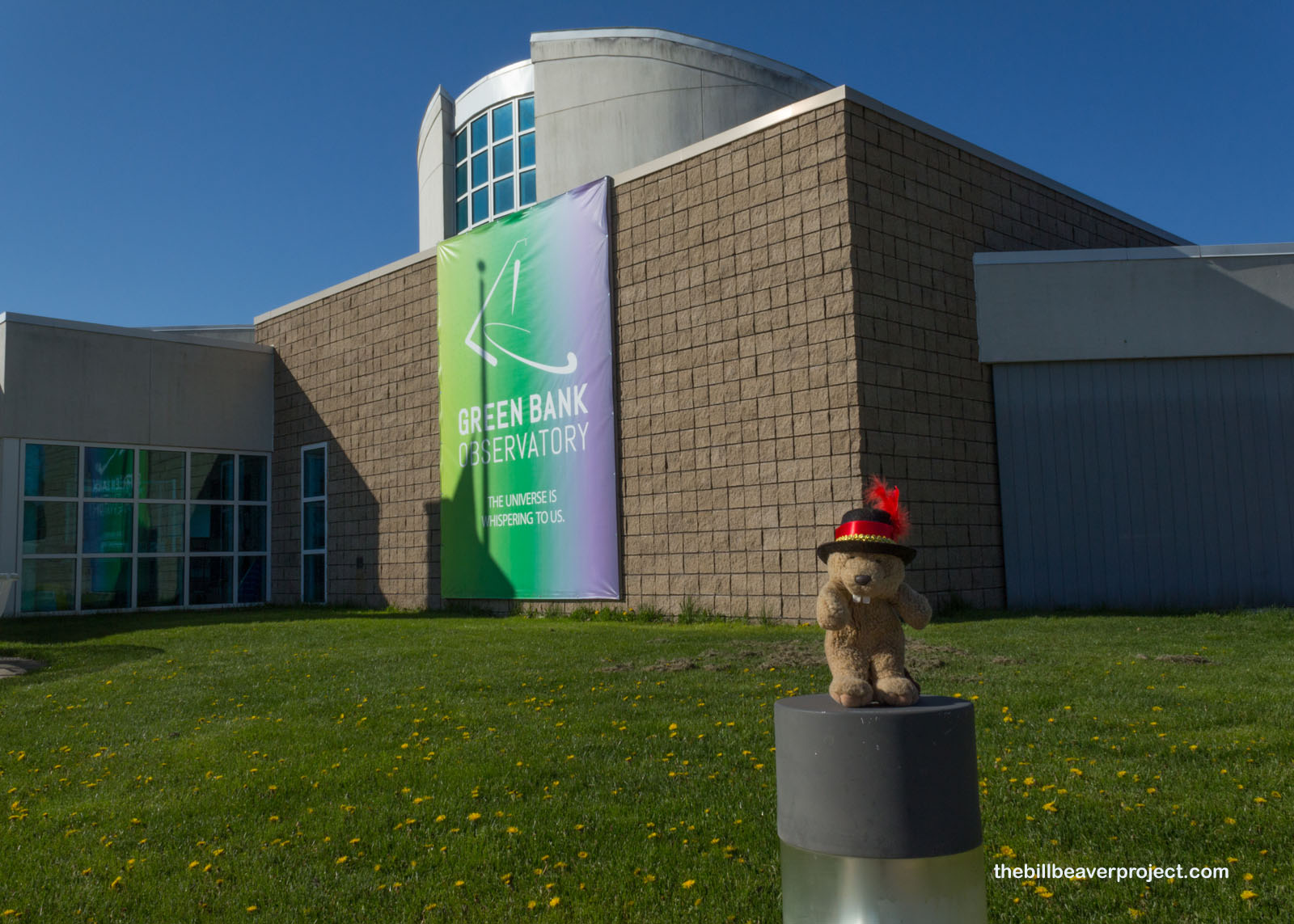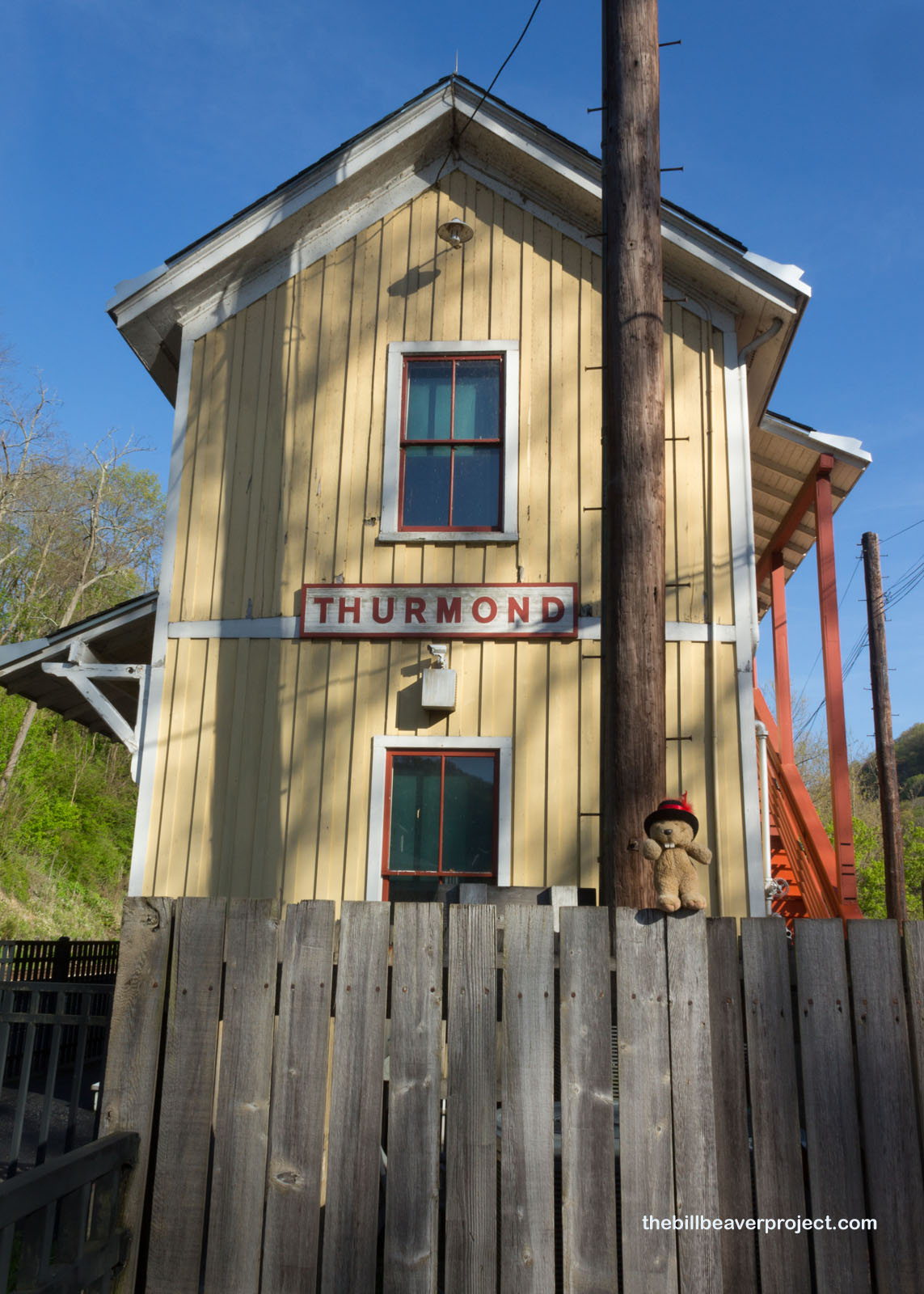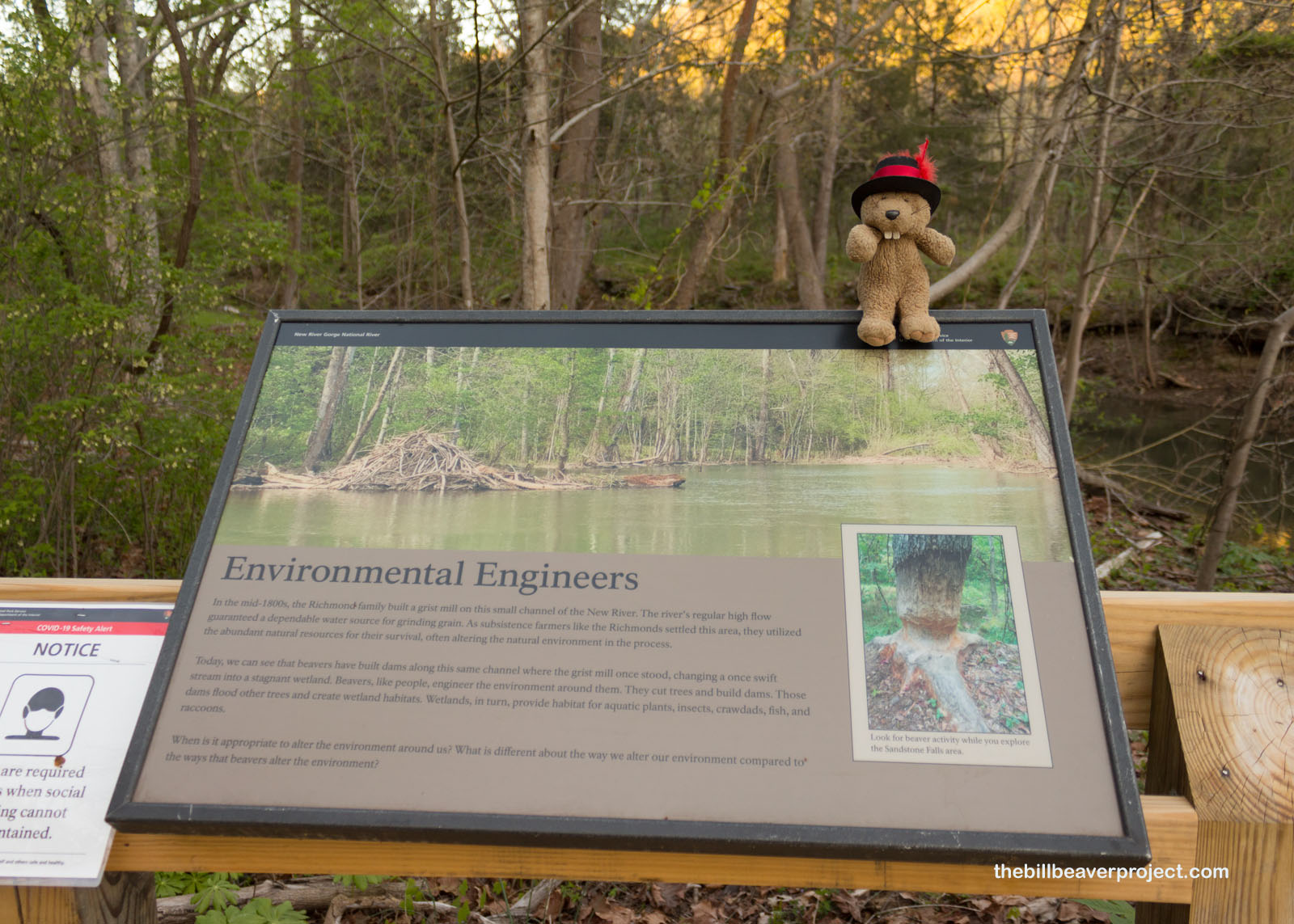 Previous Day |
Staunton, VA → Flatwoods, WV → Staunton, VA 483.0 mi (777.3 km) |
 Next Day |
Shh… everybody…
Be vewwy vewwy quiet. They’re hunting aliens over here! I’ve just entered the West Virginia Radio Astronomy Zone, party of the 13,000-square mile Radio Quiet Zone! The Federal Communications Commission set it up in 1958 so that the National Radio Astronomy Observatory could watch the night skies in peace and the Navy Radio Station at Sugar Grove could listen for trouble without interference! In particular, the 20 miles around Green Bank, West Virginia are kept free of Wi-Fi routers, microwave ovens, and most cell phones!
 |
This radio silence enables the folks at the Green Bank Observatory to listen very, very carefully for the faintest sounds, be they stars being born, low-frequency gravitational waves, or the current position of Apophis, a dangerous asteroid scheduled to pass between Earth and the moon in 2029! These observations not only help scientists understand the nature of the universe but also give folks here a heads up in case something big and stony comes knocking on Earth’s door! And yes, they are keeping their collective ears peeled for aliens too. These sensors, the brochure warned, could pick up a cell phone in airplane mode… on Saturn!
 |
 |
And there’s the dish, folks! That right there is the world’s largest fully moveable motor-driven structure on land! Named for Senator Robert C. Byrd, whose career saw a remarkable arc from KKK leader to NAACP-endorsed civil rights champion, this is one amazing telescope! 100 meters in diameter, and perfectly smooth to 260 microns, this 17-million pound observation tool can observe the skies 24 hours a day, 362 days a year, making 6,500 hours of observation every year!
 |
Some of those observations have been really neat! The Green Bank Telescope was first to spot a two-solar mass pulsar, hydrogen signals that can clue us into the expansion of the universe and nature of dark energy, and the molten core of Mercury! It can even analyze how much organic material, like acetamide, is present in interstellar clouds!
 |
Stationed near the visitor center was a much smaller, but incredibly important, telescope designed by hobbyist, Grote Reber. Unable to get a job working with Bell Labs, he built his own parabolic dish reflector telescope in his back yard, the first of its kind! And you know what? It worked really well! He mapped out the sky based on radio wave observations, and his published articles made radio astronomy a major field of research after World War II. His pioneering work laid the foundation for this type of telescope, which ultimately led to the Green Bank Telescope and the massive one at Arecibo!
 |
 |
One of the things they’re looking for was rumored to have already set foot in West Virginia, circa September 12, 1952! My next stop after Green Bank was dedicated to telling the tale of this mysterious hooded figure, known to the locals as Braxxie but to most folks as the Flatwoods Monster! After visiting the Mothman Museum two years ago, I was really curious what information I’d find about this creepy cryptid in its hometown museum!
 |
The story goes that Edward & Fred May were out one night with their buddy, Tommy Hyer, and saw a bright object from the sky land on the farm of one of their neighbors. Gathering some other friends, they approached the spot and found a 10-foot, hooded creature with an Ace-of-Spades head, plus claws and glowing eyes! It hissed and glided toward them, releasing a gross-smelling mist that made them all sick! Nothing was left of it, though, when folks went back to investigate the next day.
 |
Unlike the Mothman Museum, which was full of educational signs and stories, the Flatwoods Monster Museum was really just full of stuff: a single wall of art, collectibles, memorabilia of events inspired by the monster, and the like. Also unlike the Mothman, the Flatwoods Monster was only seen this one time. What is known is that a meteor did cross the skies of West Virginia, Maryland, and Pennsylvania that night. There were also flashing, red, aircraft beacons in the area, and it’s likely, based on the description of the critter, that the crowd of locals startled a hissing barn owl that flew at them!
 |
 |
But, everyone loves a good monster story, and Braxton County is no exception! There’s an annual Flatwoods Days festival that commemorates the monster and a prize for visitors who can photograph all five monster seats hidden around Sutton and Flatwoods! I only found the one down the street from the museum, but that was okay. I’m sure “Braxxie” was just fine getting freed by other visitors!
 |
Instead, I spotted something lovely and unexpected: Firstbud flowers! With all my running around through history, I’d forgotten to take a moment and appreciate the springtime beauty on the banks of the Elk River! As far as places to frolic for Firstbud, this one was out of this world!
 |
Not too far south from the lair of the Flatwoods Monster, I reached the nation’s newest (December 27, 2020) national park: New River Gorge National Park and Preserve! That may be the only new thing about this park, which centers around what could be one of North America’s oldest river systems!
 |
I set out to get my first glimpse of that river system from above with a steep staircase that descended from the park. This was going to give me a glimpse of the structure that makes this park recognizable to folks visiting from all over.
 |
That’s the New River Gorge Bridge, one of the most photographed spots in West Virginia! Before it was completed on October 22, 1977, folks had to wind all the way down to the river, then all the way back up, which took about forty minutes. This Cor-ten steel bridge, constructed by the Michael Baker Company, cut that crossing time to one minute! Every year, on the third Saturday of October, the Bridge Day festival brings food, music, and hundreds of BASE jumpers, a tradition that got its start in 1980!
 |
And less than ninety degrees to the left was the view of the New River Gorge, largely as it has looked for eons! This is the deepest and longest gorge of the Appalachian Mountain range, split into special habitats from forest seeps to rimrock to wetlands, all of which are an important home for endangered critters like the Virginia big-eared bat and the Allegheny woodrat!
 |
There was no sense hanging around at the top looking down! I headed down into the Gorge to see one of its historic sites. The boomtown of Thurmond was built here in 1873 with the exact opposite mission of New River Gorge National Park: the extraction and shipment of coal!
 |
Yes folks, West Virginia is famous for its coal deposits, and Captain W.D. Thurmond was anxious to take advantage of the abundant coal in this area and its proximity to the newly completed Chesapeake and Ohio Railway, the successor to the Chesapeake & Ohio Canal!
 |
By 1910, Thurmond was a thriving coal town with one of the busiest freight stations around. It was a small community, but it produced a lot, outpacing its nearest major cities, Richmond and even Cincinnati!
 |
Thurmond even ended up as a tourist destination! In the heart of this natural beauty, the town opened up two hotels, a bunch of restaurants and shops, plus a movie theater! The passenger depot here serviced up to 75,000 passengers a year!
 |
Even though Thurmond depot is still an active Amtrak station today, the crowds are a far cry from what they once were. As the coal mines began to dry up, and transportation radically changed around the country, first to diesel trains then to automobiles, this town in the Heart of the Gorge dried up!
 |
 |
All this talk of drying up made me realize I had one last stop before sunset. It would be a long and circuitous route, because bridges over the New River were few and far between! I had to head way down from I-64, through the impossibly charming town of Hinton, cross the river, and go almost all the way back the distance I’d come, just to reach Sandstone Falls!
 |
Right away, I spotted an homage to beaver kind! While there was a grist mill here in the mid 1800s, once that enterprise shut down, beavers moved in! Today, they’re still shaping this waterway using time-honored techniques, creating new wetland homes for all kinds of plants and critters! I hoped to meet some as I walked, but no one seemed to be around.
 |
Sandstone Falls was pretty simple, just one shelf of sandstone with the water cascading over it, but it was the surroundings that made the New River’s largest cascade really peaceful and pretty to watch at the end of a long day running around. The sunset made the mountaintops glow, and the water seemed very clean and clear! It looked like there was plenty of building material for those beavers to use too!
 |
From here, the New River flows into its namesake gorge, after which it merges with the Kanahwa, then the Ohio, then finally, the Mississippi! In a way, I’m ending today’s adventure at a beginning. From deep in the earth to the farthest reaches of outer space, West Virginia has earned its nickname as the Mountain State, its reputation for being “almost heaven,” and an all-around great state for picking out an adventure!
 |
With the lights going out, I’m heading back into east Virginia to visit some sights I’d meant to see two days ago if I hadn’t had the debacle with Wright Brothers National Memorial, but you know what? Tomorrow’s going to be a bright and beautiful day, and I’ve got plenty more history to explore and share. Stay tuned!
Spacin’ out!

 Previous Day |
Total Ground Covered: 1,415.8 mi (2,278.5 km) |
 Next Day |
